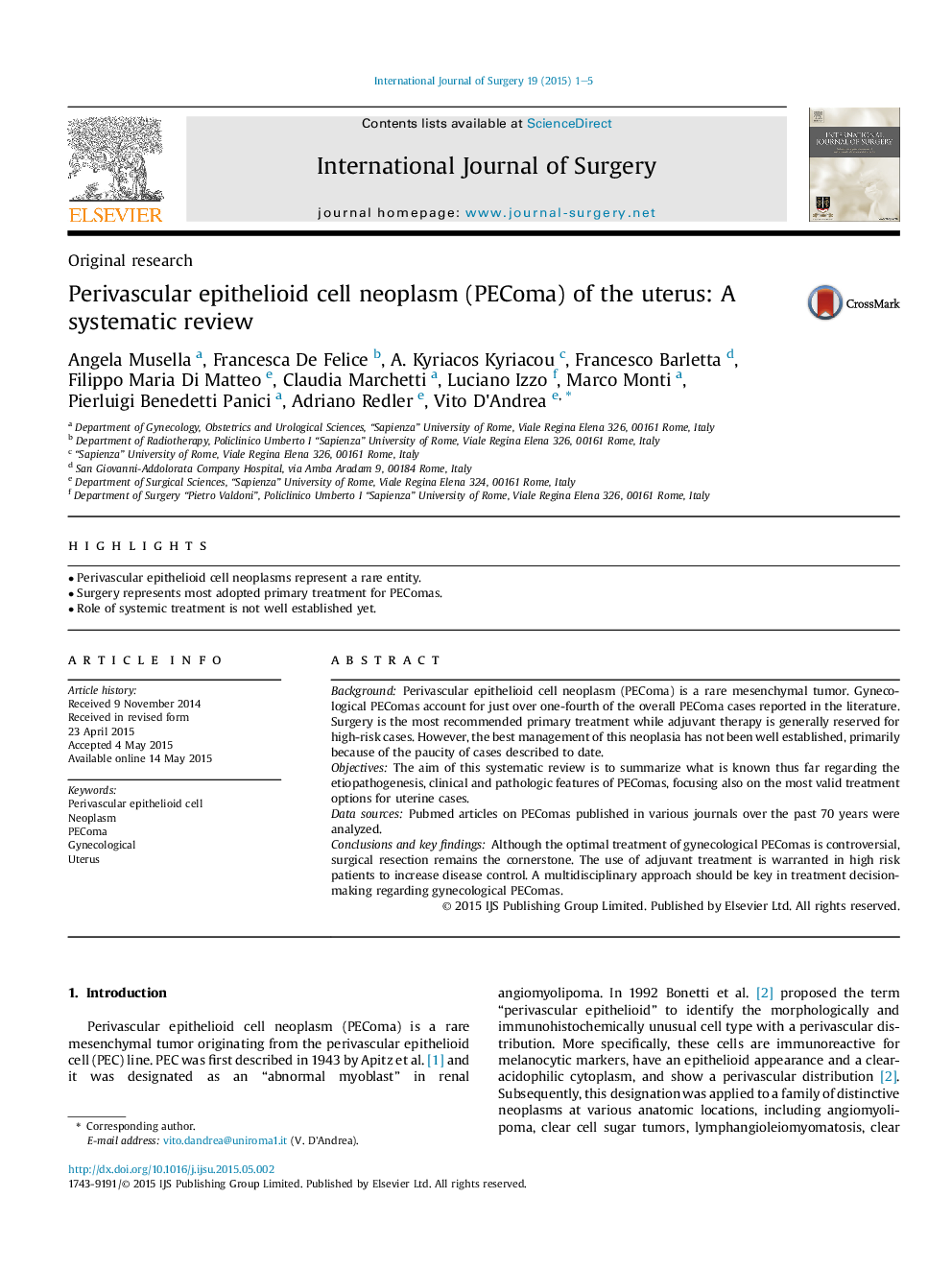| Article ID | Journal | Published Year | Pages | File Type |
|---|---|---|---|---|
| 6251453 | International Journal of Surgery | 2015 | 5 Pages |
â¢Perivascular epithelioid cell neoplasms represent a rare entity.â¢Surgery represents most adopted primary treatment for PEComas.â¢Role of systemic treatment is not well established yet.
BackgroundPerivascular epithelioid cell neoplasm (PEComa) is a rare mesenchymal tumor. Gynecological PEComas account for just over one-fourth of the overall PEComa cases reported in the literature. Surgery is the most recommended primary treatment while adjuvant therapy is generally reserved for high-risk cases. However, the best management of this neoplasia has not been well established, primarily because of the paucity of cases described to date.ObjectivesThe aim of this systematic review is to summarize what is known thus far regarding the etiopathogenesis, clinical and pathologic features of PEComas, focusing also on the most valid treatment options for uterine cases.Data sourcesPubmed articles on PEComas published in various journals over the past 70 years were analyzed.Conclusions and key findingsAlthough the optimal treatment of gynecological PEComas is controversial, surgical resection remains the cornerstone. The use of adjuvant treatment is warranted in high risk patients to increase disease control. A multidisciplinary approach should be key in treatment decision-making regarding gynecological PEComas.
